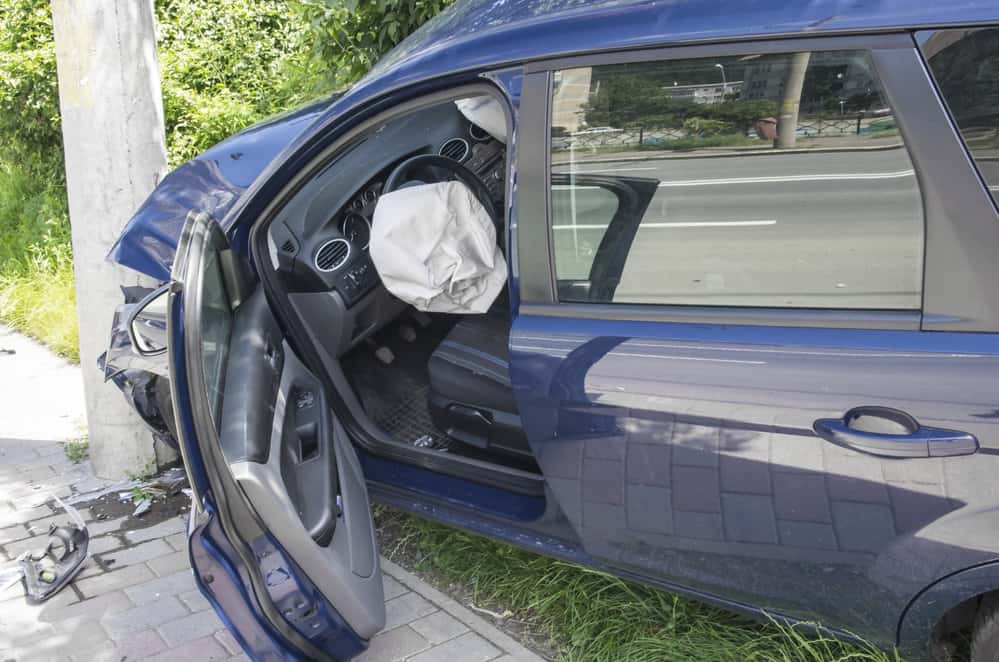Toyota has recently issued a new “Do Not Drive” advisory specific to certain older vehicle Toyota models due to a risk associated with Takata airbag inflators. This advisory targets specific 2003-2005 model-year vehicles, including the:
- 2003-2004 Corolla
- 2003-2004 Corolla Matrix
- 2004-2005 RAV4
The advisory tells owners of the affected vehicles not to drive them until they receive the necessary safety recall repairs, even to the dealership. Toyota is offering a free repair or replacement of the affected airbags. It is actively contacting owners to inform them of the recall and the urgency of getting their vehicles repaired. Approximately 50,000 vehicles in the United States are affected by this latest advisory.
The primary concern is the Takata airbag inflators in these vehicles have been found to be defective. There is a risk that these airbags may explode upon deployment, potentially sending sharp metal fragments into the vehicle’s cabin and posing a serious threat to occupants. While this advisory is related to the broader issue of defective Takata airbag inflators, it is a specific and urgent action issued by Toyota to address a unique risk associated with these older models. The primary message is the importance of not driving these affected vehicles until they have been repaired due to the significant safety risk posed by the defective airbag inflators.
This issue with the Takata airbags is not new and has been the subject of extensive recalls in the past. Over 67 million Takata airbag inflators have been recalled in the United States, with over 100 million recalled globally, making it one of the largest auto safety recalls in history. However, this latest “Do Not Drive” advisory from Toyota is a new development and should be understood as separate from earlier recalls.
Owners of the affected models can check if their vehicle is included in this recall by visiting Toyota’s recall website or the National Highway Traffic Safety Administration’s (NHTSA) website and entering their Vehicle Identification Number (VIN) or license plate information. Toyota has also made its Brand Engagement Center (1-800-331-4331) available for owners who need help or have questions regarding the recall process.
Know Your Rights: Legal Recourse for Airbag Injury Victims
If a defective airbag has injured you, you have certain legal rights that can be pursued through the legal system. These rights primarily revolve around the principles of product liability, which can hold manufacturers, designers, or other parties accountable for injuries caused by a defective product, such as an airbag.
There are three main categories of defects that can form the basis of a product liability lawsuit:
- Manufacturing Defects: These defects occur during the production of the airbag. They often involve poor workmanship or the use of substandard materials that are unique to a single vehicle or batch of vehicles.
- Design Defects: These defects are inherent in the design of the product itself. They are considered intrinsically dangerous and can jeopardize the safety of anyone using that line of vehicle.
- Failure to Warn (Marketing Defects): These occur when the dangers of a product could be mitigated through adequate warnings to the consumer. A lack of sufficient warnings or instructions can lead to injuries.
In cases of airbag malfunction, injuries can range from minor to severe, including traumatic brain injuries, facial injuries, chest injuries, injuries to limbs, and internal injuries. If an airbag deploys at the wrong time, fails to deploy, or causes shrapnel injuries, the manufacturer may have legal liability.
A personal injury claim may be pursued against the airbag manufacturer, vehicle manufacturer, or any entity responsible for inspecting, maintaining, or replacing the airbag post-purchase.
Under principles of strict product liability, the manufacturer can be held liable for any injuries caused by a defective product, regardless of whether they knew about or could have prevented the defect. This means that if a product is found to be defective and causes injury, the manufacturer can be found liable for damages even without proof of negligence.
To pursue a claim under strict product liability, the plaintiff must show that the product was defective when it left the manufacturer’s possession, that it was used as intended, and that the defect directly caused the injury.
Victims may also be able to assert claims under a negligence legal theory. These claims require proving there was a duty of care owed by the manufacturer to the plaintiff; the manufacturer breached that duty, and the breach was the proximate cause of the injury.
If you’ve been injured due to an airbag malfunction, it’s essential to preserve evidence and promptly consult a lawyer to assess your case. Evidence may include the airbag parts, crash sensor, and any other relevant materials from the vehicle.
These legal rights and the process of claiming compensation can vary depending on the jurisdiction and specific circumstances of each case. Consulting with a legal expert in this field is important to understand and effectively exercise your rights as a victim of an airbag malfunction injury.



